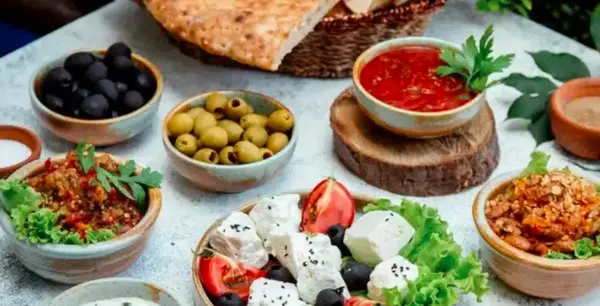Hey, there! Have you heard about çebiti? No, this isn’t some strange new online terminology or the latest health trend. cebiti is a traditional Turkish handmade copper bowl used for hand washing. If you’ve ever visited Turkey or appreciate learning about different cultures, the cebiti is an intriguing aspect of Turkish history. For ages, these elegant copper bowls have been an essential component of Turkish hospitality and cleanliness. Continue reading to learn more about the cebiti’s history, usage, and creativity.
What is çebiti?
çebiti stands out as a cherished Turkish stew, weaving together the robust flavors of lamb or beef with a tapestry of ingredients. Onions, garlic, and a medley of vegetables including carrots, celery, eggplant, and green beans engage in a flavorful dance. The ensemble is artfully sautéed in olive oil, creating a harmonious prelude before the simmering crescendo in a luscious tomato sauce, where the meat achieves a symphony of tenderness.
Cebiti is usually seasoned with Mediterranean spices including oregano, mint, cinnamon, and black pepper. Some recipes include red wine or chili peppers to increase flavor. The long, slow cooking procedure allows the flavors to combine, resulting in a thick, substantial stew.
Cebiti is typically prepared in big portions for family-style consumption. It is frequently eaten with a side of rice, bulgur, or bread to soak up the savory sauce. A simple salad adds balance to the thick, delicious stew.
History and Origins of çebiti
The çebiti has a lengthy and colorful history that goes back several centuries. This antique Turkish coffee pot dates from the 16th-century Ottoman era. Initially fashioned of copper, the cebiti was created exclusively for brewing and serving Turkish coffee.
The Design
The cebiti is made up of two parts: a small top piece with a long handle for pouring, and a broader bottom section for brewing and storing. Traditionally fashioned of copper, cebitis are also available in brass, bronze, and nickel silver. The unusual shape and substance assist in evenly dispersing heat during brewing and keep the coffee hot thereafter.
The Ritual
The cebiti is an important cultural practice associated with Turkish coffee. To brew, fill the pot with water and coffee grinds and lay it over hot coals or on the stovetop. After brewing, the grinds sink to the bottom, and the coffee is poured into little cups known as fincans. The pot is frequently kept on the burner with the spent coffee grounds to enable refills because Turkish coffee is supposed to be gently drunk and relished.
An Eternal Tradition
The çebiti has persisted for centuries because of its flawless design and strong ties to Turkish culture and hospitality. While contemporary electric coffeemakers have gained popularity, the remain an indispensable component of everyday life and social occasions. Additionally, the classic bubbling sound of coffee brewing in it and the rich, strong flavor make this pot timeless. From the past to the present, the draws people together around a hot cup of Turkish coffee.
Ingredients for Making
- 1kg lamb or chicken sliced into bite-sized pieces
- 3 diced onions
- 3 diced carrots
- 2 bay leaves
- 2 tablespoons olive oil
- 1 teaspoon black pepper
- 1 teaspoon salt
- 4 chunked potatoes
- 2 cups water or broth
How çebiti is served
- Upgrade the meat’s essence with a touch of artisanal flair—1/2 teaspoon salt and 1/2 teaspoon pepper will work their culinary magic.
- Heat olive oil in a Dutch oven or big saucepan on medium-high heat. Furthermore, brown the pork on all sides for around 5-7 minutes total. Transfer to a serving plate and set aside.
- In a saucepan, unite the onions, carrots, and bay leaves. Stir occasionally and let them cook for 10 minutes until the vegetables achieve a delightful tenderness.
- Mix potatoes with water/broth, a hint of artisanal salt, and a dash of freshly ground pepper. Swiftly bring to a boil.
- Return browned meat to the pot. Reduce the heat to medium-low, cover, and cook until the veggies and beef are soft, about 1 to 1 1/2 hours.
- Remove bay leaves before serving. Çebiti is typically served with parsley and lemon wedges. Additionally, serve with rice pilaf, bulgur, or crusty bread to soak up the delicious sauce.
Where to Search for the Best çebiti?
Cebiti, Azerbaijan’s traditional stew may be found across the country. Here are some of the best venues to sample this delicious food.
Baku
Baku, Azerbaijan’s main city has several possibilities for it. Visit Şəki Sarayı, an elegant Azeri restaurant in Baku’s Old City. Moreover, they specialize in high-quality, genuine çebiti made with lamb, potatoes, tomatoes, and green peppers. For a more relaxed atmosphere, visit Şato, a renowned café nestled within the Old City walls. Additionally, their çebiti is created with beef and onions in a thick broth, ideal for a quick and economical supper.
Sheki
Sheki, located in northern Azerbaijan, is widely recognized as the country’s culinary capital. It is the best place to obtain handmade cebiti cooked in the traditional method. Visit İsa Bey Caravanserai, a renovated 18th-century inn, to eat cebiti on their lovely garden terrace. Xan Sarayı Restaurant, nestled within Sheki’s old palace, is another excellent option. They utilize local products to produce it and other traditional Azeri delicacies.
Quba
Quba, located in the foothills of the Caucasus Mountains, is also noted for its high quality. Visit Qədim Quba, a traditional restaurant set in a historic structure. Furthermore, their çebiti is produced from lamb farmed in the nearby highlands, which lends it a deep taste. Moreover, Quba Şadlıq Evi serves handmade in a traditional atmosphere. Lastly, they usually have live folk music performances, providing a genuine Azeri atmosphere.
Conclusion
So that’s all you need to know about çebiti, a unique and delicious Turkish delicacy. Embarking on the gastronomic adventure of crafting Cebiti is a true odyssey, equally captivating for aspiring bakers seeking skill refinement and culinary maestros aiming to astonish guests. Moreover, armed with a curated selection of premium ingredients and a dash of culinary finesse, the creation of this exquisite treat unfolds in the canvas of your kitchen. Additionally, with each bite, as the nuanced nutty filling intertwines with layers of impeccably crisp and delightfully chewy dough, the time-honored enchantment of it in Turkish culinary tradition reveals itself, a testament to decades of gastronomic artistry.
FAQ’s
What precisely constitutes çebiti?
Çebiti is a traditional Turkish dish consisting of hollowed-out vegetables such as bell peppers, zucchini, eggplants, and tomatoes filled with minced pork, rice, onions, and spices.
How is çebiti different from other stuffed vegetable dishes?
While similar to other stuffed vegetable meals, çebiti stands out for its unique blend of Turkish spices and traditional cooking method, which frequently involves baking the veggies stuffed with a savory meat and rice mixture.
Can çebiti be made vegetarian?
Yes, çebiti may be turned vegetarian by replacing the ground beef with a variety of vegetables, legumes (such as lentils), and grains.
What spices are typically used in çebiti?
Spices used in çebiti include allspice, black pepper, cinnamon, mint, parsley, and sumac. These spices produce a distinct taste profile that is rich and fragrant.









Leave a Reply